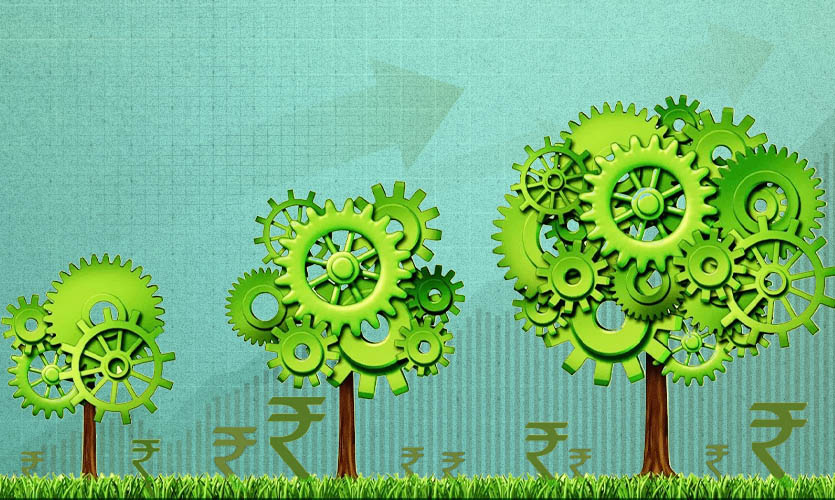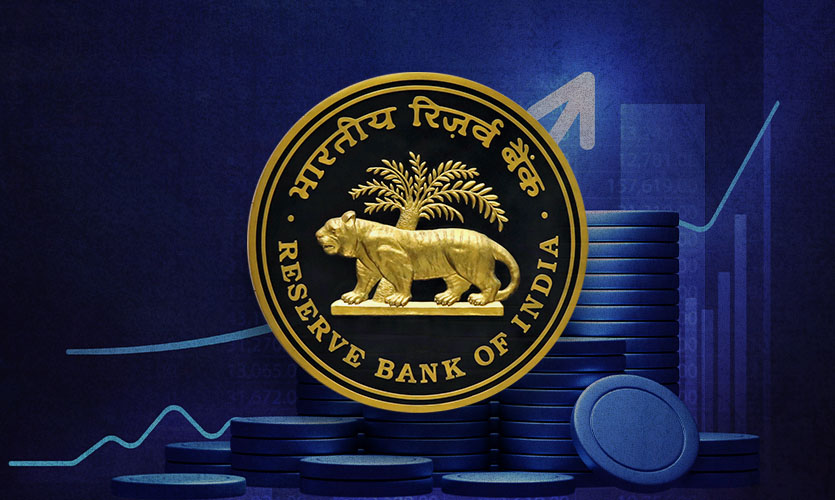The Union Budget 2023-24 presented in the Parliament on February 1, by Finance Minister Nirmala Sitharaman, saw increased importance given to reducing the carbon intensity that the Indian economy is responsible for.
The Budget highlighted India’s push to meet clean energy targets and scale up green job opportunities.
The finance minister highlighted ‘green growth’ as one of the seven goals or “saptarishis’’ in this “first budget of the Amrit Kal’’. India’s green growth initiatives would focus on green fuel, farming, mobility, buildings, and equipment. The Centre’s green growth-focused policies are in line with India’s aim to achieve its long-term goal of reaching net-zero emissions by the year 2070.
“We are implementing many programmes for green fuel, green energy, green farming, green mobility, green buildings, and green equipment, and policies for efficient use of energy across various economic sectors,” said Sitharaman. “These green growth efforts help in reducing the carbon intensity of the economy and provide for large-scale green job opportunities,” she added. Furthermore, the minister said that these initiatives were in line with the prime minister’s vision of “LiFE”, or Lifestyle for Environment, which will move the country towards an “environmentally conscious lifestyle”. “India is moving forward firmly for the ‘panchamrit’ and net-zero carbon emission by 2070 to usher in a green industrial and economic transition,” she said.
Some of the revisions made in the budget allocation by the Ministry of Environment, Forest and Climate Change include a revised distribution from Rs 2,478 crores in the last budget to Rs 3,079.4 crores. Additionally, a separate budget has been set aside for the National Mission on Natural Farming, at Rs 459 crores. The budget for controlling pollution increased to Rs 756 crores in the latest budget, compared to Rs 600 crores allocated last year.
Green Growth Initiatives
A slew of measures for climate action announced by Sitharaman, included the recently launched National Green Hydrogen Mission that will facilitate the transition of the economy to low carbon intensity, reduce dependence on fossil fuel imports and help the country “assume technology and market leadership in this sunrise sector”. The minister announced that Rs 19,700 crores will be allocated towards this mission to aid India in achieving its annual production target of 500 MMT (million metric tonnes) of green hydrogen by 2030.
Furthermore, the budget allocated ₹35,000 crores towards priority capital investment for energy transition, net-zero objectives, and energy security measures. The Centre also aims to be comprehensive in its green growth measures, by encouraging behavioural changes through the Green Credit Programme that will be notified under the Environment Protection Act, 1986. The programme will incentivise environmentally sustainable and responsive actions by companies, individuals, and local bodies, and help mobilise additional resources for such activities.
“The government clearly identifies green growth as one of the pillars of development, announcing support measures for storage and renewable energy evacuation infrastructure. This is a welcome move as India tries to rapidly increase the share of renewables in the grid,” said Balasubramanian Viswanathan, policy advisor at International Institute for Sustainable Development (IISD).
The government also plans to integrate Ladakh’s grid with an inter-state transmission system to evacuate 13 gigawatts (GW) of renewable energy from the Union Territory, at a cost of Rs 20,700 crores, of which Rs 8,300 crores will be sponsored by the central government.
Push For Green Mobility
The finance minister announced viability gap funding for battery energy storage systems with a capacity of 4,000 MWh (megawatt hour) to spur the economy towards sustainable development. “A detailed framework for Pumped Storage Projects will also be formulated,” announced the finance minister. Additionally, the import of capital goods and machinery required for the manufacture of lithium-ion cells for batteries used in electric vehicles will be exempted from customs duties.
Other measures to encourage green mobility include the replacement of old polluting vehicles. In the Vehicle Scrapping Policy mentioned in Budget 2021-22, the minister allocated funds to scrap old vehicles of the central government. States will also be supported in replacing old vehicles and old state ambulances.
“The VGF support and greater thrust on pumped hydro are critical to helping India move towards meeting the Energy Storage Obligation targets”, said Rishabh Jain, senior programme lead at Council on Energy, Environment and Water (CEEW). “The VGF support should, however, be leveraged to increase our understanding of the technology and application and should not be considered as a continuous tool for support,” said Jain. “Further, the exemption of customs duty for capital goods and machinery for lithium-ion battery manufacturing will reduce the final prices of batteries and make electric vehicles more affordable for consumers,” he added.
Jain continued, “CEEW Analysis suggests that the key equipment for battery cell manufacturing is imported and their share is between 65-75 percent of the overall infrastructure costs. Going forward, the government must aim to acquire critical minerals from overseas and build the capability to process them.”
Ecosystem Conservation Measures In States
Ecosystem conservation projects like the ‘Mangrove Initiative for Shoreline Habitats & Tangible Incomes’ – MISHTI – involves planting mangroves along the coastline and on salt pan lands, wherever possible, through convergence between MGNREGA, CAMPA Fund and other sources. Another new scheme includes ‘Amrit Dharohar’, set to be implemented over the next three years, to “encourage optimal use of wetlands, and enhance biodiversity, carbon stock, eco-tourism opportunities and income generation for local communities”, as announced by the finance minister.
In an attempt to “promote a circular economy”, the government will set up 500 “waste to wealth” plants at a cost of Rs 10,000 crores under the GOBARdhan (Galvanising Organic Bio-Agro Resources Dhan) scheme. The plan involves the set-up of 200 compressed biogas plants. Compressed biogas can be used as an alternative fuel for automobiles due to its high calorific value. The majority of the “waste to wealth” plants close to 300 will be in rural areas and 75 plants in urban areas, informed Sitharaman.
India aims to transition its cities and towns from “manhole to machine-hole mode”, and an enhanced focus will also be provided for the “scientific management of dry and wet waste”. The finance minister said that the government will incentivise the use of “alternative fertilisers” to balance the use of chemicals, and promote “natural farming”.
The Centre aims to encourage cities and towns to develop urban planning reforms and actions to transform cities into “sustainable cities of tomorrow”. “This means efficient use of land resources, adequate resources for urban infrastructure, transit-oriented development, enhanced availability and affordability of urban land, and opportunities for all,” said Sitharaman.
Areas Of The Budget That Contradict Green Growth
The government aims to set up three centres of excellence for Artificial Intelligence in top educational institutions, along with leading industry players to “partner in conducting interdisciplinary research, develop cutting-edge applications and scalable problem solutions in the areas of agriculture, health, and sustainable cities”, according to the finance minister.
However, while the government aims to take a holistic science-based approach to green growth, certain development projects announced in the Budget cannot be deemed as sustainable, for example, the construction of 50 additional airports, and identifying 100 projects to develop last-mile connectivity for sectors such as coal and ports. The ministry’s budget allocates Rs 30,000 crores in capital support for oil-marketing companies (OMCs) and Rs 5,000 crores for strategic petroleum reserves found. IISD’s Viswanathan says, “While controlling energy prices and ensuring energy security is critical, India must ensure that financial support is directed towards low carbon technologies.”
Furthermore, Sitharaman said that to improve the ease of doing business, over 39,000 compliances have been reduced, and more than 3,400 legal provisions have been decriminalised. Experts have pointed out that these measures could lead to the dilution of environmental protection laws.
“It is laudable that the green growth framework used by the honourable finance minister will guide investments in renewable energy, energy efficiency, and sustainable transportation. However, we need to identify the areas of environmental degradation and areas of the economy where environmental degradation has the greatest impact and take steps to address them,” said Anjal Prakash, research director at Bharti Institute of Public Policy, Indian School of Business. “The economic survey 2023, unfortunately, didn’t have enough analysis on this front that could have informed the green budget,” she added.
Experts have pointed out that several initiatives like the Climate Change Action Plan, National Adaptation Fund and the National Mission on Himalayan Studies found no allocation in this year’s budget as compared to last year, when these programs received Rs 30 crores, Rs 60 crores and Rs 48 crores, respectively.
Read more: Key Takeaways And Highlights from Union Budget 2023-24










